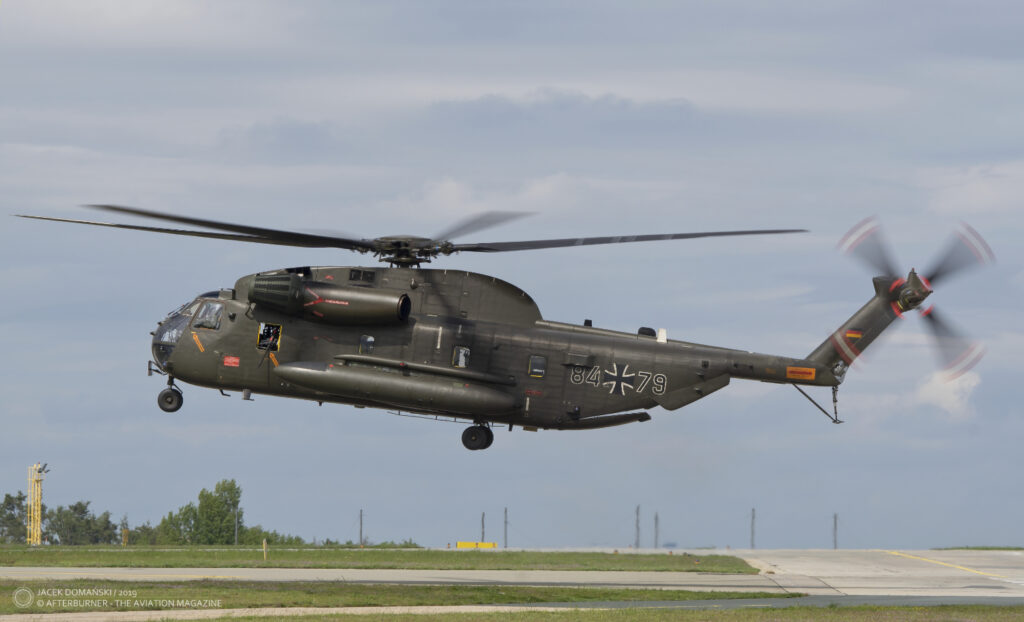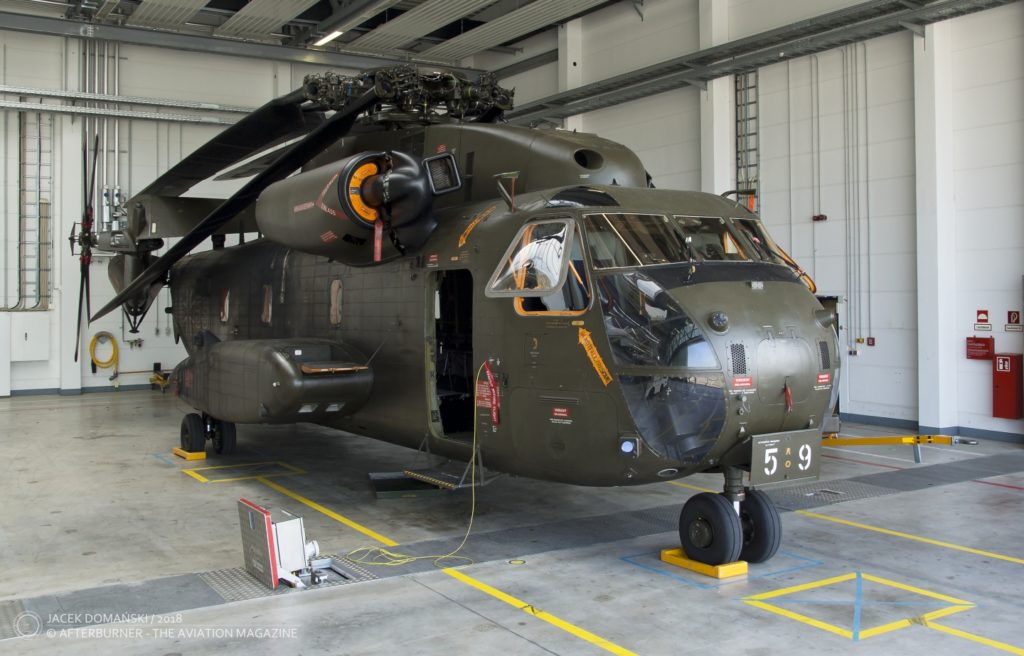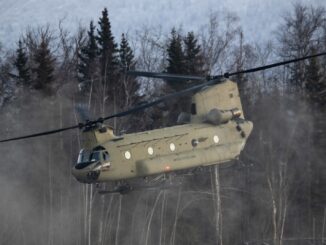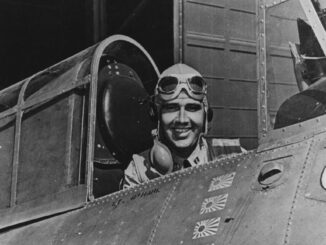 On 14th October 1964, YCH-53A – prototype of heavy lift cargo helicopter (later known as Sikorsky CH-53 Sea Stallion), performed its maiden flight.
On 14th October 1964, YCH-53A – prototype of heavy lift cargo helicopter (later known as Sikorsky CH-53 Sea Stallion), performed its maiden flight.
The CH-53 owns its origins to the United States Marine Corps and the idea of heavy shipborne cargo helicopter that was consistently developed by that branch of the US armed forces since the early 1950s.
At the beginning, there was Sikorsky HR2S (also known as CH-37 Mojave in the US Army or company designation S-56). It was an assault transport rotorcraft able to carry up to twenty six troops. The HR2S was introduced into operational service in July of 1956, being one of the last helicopters powered by piston engines. Soon it turned out that they were inefficient for a rotorcraft of that size, what resulted in a very short service life of the HR2S.
Yet in 1960s, the USMC began to search for a more effective replacement. The first idea was to join so-called ´Tri-Service VTOL transport´ programme. That joint initiative of the USMC, the US Army and the US Air Force led to creation of a tiltwing aircraft, designated LTV XC-142. It seemed to be cutting-edge construction, being ahead of its time but, regrettably, the development was becoming protracted. At the same time, the process of retiring the HR2S was already underway, and the Marines were at risk to stay without a capable heavy lift aircraft.
As a consequence, the USMC withdrew from the abovementioned initiative – causing the whole XC-142 programme was cancelled shortly after – and in March of 1962 issued its own specification for a new heavy helicopter. The Navy requirements were simple but challenging. The new rotorcraft for the Marines had to have greater lifting capability than any existing helicopter, as well as lower empty weight and higher top speed than any similar design.
Three aviation manufacturers responded to the USMC request. Boeing offered an upgraded version of CH-47 Chinook, a derivative of the Fairey Rotodyne compound gyroplane was proposed by Kaman and, finally, there was a scaled-up variant of S-61 helicopter, offered by Sikorsky. Shortly thereafter, Kaman withdrawn from the competition as the Rotodyne programme was cancelled by the British government.

From the very beginning, the CH-47 was regarded as the frontrunner of the USMC contest. Nevertheless, in July of 1962 the Navy had officially chosen the rotorcraft proposed by Sikorsky.
Initially, the USMC wanted to order four prototypes of the new helicopter but due to budget cuts that number had to be reduced to only two. In addition, the development process suffered from several technical and financial issues, caused by the government, the manufacturer and its subcontractors. In the end, the first prototype of YCH-53A took-off in October of 1962, couple of months off the schedule.
Despite the initial issues with its development, the CH-53A Sea Stallion – as the helicopter was officially designated – turned out to be a reliable rotorcraft that proved its values in several conflicts and other military operations. First deliveries to the USMC units began in September of 1966 and yet in January of the next year, the CH-53s were deployed to Vietnam.
Also in September of 1966, the Sea Stallion helicopters were ordered by the USAF, where they were known as HH-53B. The deliveries started in March of 1967 and with the USAF the helicopter was primarily used for combat search and rescue missions.
Over the next years, the Sea Stallion rotorcraft were operationally used in the Vietnam War, Operation Eagle Claw in Iran, Operation Urgent Fury in Grenada, Operation Iraqi Freedom and finally Operation Enduring Freedom in Afghanistan.
The CH-53A is operated by a crew of four, can carry up to 38 fully equipped Marines and has internal cargo load capability of 3,600 kg. An external load of 5,900 kg can be carried on a sling hook. The rotorcraft is powered by two General Electric T-64 turboshaft engines with six-bladed main rotor.

Two Sea Stallion helicopters, designated VH-53D, were adopted for VIP transport purposes and then assigned to Marine Helicopter Squadron One (HMX-1), responsible for transportation of the President of the United States, other highest US officials and heads of state.
In 1968, the Sea Stallion was ordered by Israeli Air Force, where it received the Hebrew name Yasur (English: petrel). Shortly after, six helicopters were also delivered to the Imperial Iranian Navy. They were still operated there after the Iranian Revolution, despite the US sanctions and, in addition, the initial fleet was extended by five helicopters abandoned in Iran by the US Navy during the abovementioned Operation Eagle Claw.
In June of 1968, the CH-53 was also chosen as the heavy lift helicopter for the German armed forces. Since 1971, the German variant was locally manufactured under licence by VFW-Fokker company and a total number of 110 examples was produced (more information about German variants of the CH-53 can be found here).
In addition, a few helicopters were tested and operationally used for a short time by the Austrian and Mexican air forces.
In 1974, the Sea Stallion was developed into CH-53E Super Stallion helicopter. The rotorcraft received a third engine, the seventh blade was added to its main rotor, as well as the tail rotor was 20° tilted. The upgraded helicopter is capable to carry up to 55 troops or 13,610 kg of cargo. The external load capacity was increased up to 16,330 kg.
Currently, the CH-53 Sea Stallion is slowly being retired from active service and replaced by newer, up-to-date aircraft, such as V-22 Osprey or Sikorsky CH-53K King Stallion. The latter is a significantly upgraded derivative of the CH-53 that performed its maiden flight in October of 2015. On 22nd April 2022 year, the King Stallion achieved the initial operational capability status.

Cover photo: Sikorsky CH-53GS (Luftwaffe) during exercise Dark Blade 2019. Photo (3) © Royal Norwegian Armed Forces / Forsvaret.


